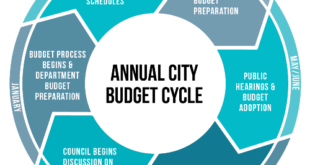By Jim Stasiowslki
When I got my first newspaper job in 1976, my dad, a creative craftsman, took a 14-inch-high metal sculpture he had inherited from his dad, another innovator, and turned it into a desk lamp for me.

The sculpture, which resides proudly in my office, is of a newsboy hawking his wares, a paper labeled “Evening News,” and the nameplate at the base reads: “6 p.m.”
I recently retired from what will be my last newsroom job, and I’ll spare you the math problem: That’s a 40-year career in newspapers, a span in which our industry has faced mortal peril.
What, I’ve been asked, is the biggest difference between reporting today and reporting in the 1970s and 1980s?
The answer is easy: urgency.
I was lucky that the two papers I worked for as a full-time reporter were PMs, which meant when my workday started, usually at or before 7 a.m., everything I was doing was in a hurry, an effort to squeeze out a story (or sometimes, more than one) in a very compressed time.
That meant if my editor said, “Hey Stasiowski, we need (whatever) …,” I had no choice but to start dialing the phone before he or she finished the sentence.
That sense of urgency never left me. In my 14 years as a full-time reporter, I can’t recall a moment that I wasn’t chasing stories. I either had a telephone in my hand or my fingertips on the keyboard.
And that wasn’t true of only me; my colleagues too always were racing for another source, another fact, another story.
The culture has changed, however. First of all, there are so few PM papers that young reporters don’t often have the same right-from-the-start deadline pressure that disciplined me. The morning-paper deadline is such that many reporters can arrive at a reasonable hour and spend time getting settled before the chase begins.
Second, there is that Internet. A reporter who gets an assignment – “Hey (you), we need (whatever),” – can justify waiting on the first phone call by Googling for background on (whatever).
I do see the value in seeking out background; it helps reporters ask better questions when the phone calls start.
But that seeking from the Internet has a drawback: If we wait to start calling, we risk not reaching the sources crucial to our stories.
(And Internet research has its built-in drawbacks. Websites for organizations or people often are misleading because they haven’t been updated, or their information is vague or self-serving rather than accurate or enlightening.)
Third – and this is a personal observation rather than any kind of scientific conclusion – younger reporters of today are so accustomed to the electronic marvels of email and texting, they don’t grow up enjoying the more competitive effort involved in either phone-call or in-person interviewing.
Here’s a small example: Whenever I’m in a newsroom, I hear reporters who call a source, and the first thing they say is, “Do you have time to talk right now?”
That is a polite approach, but it also gives the source a perfect opportunity to say, “No, I don’t. Let’s talk later.”
My advice: Don’t waste a connection with a source. His or her agreement to “talk later” may be sincere, but it’s still risky, as a million distractions may intervene, including the completely plausible “I forgot” excuse.
Obviously, there are circumstances that dictate a different approach. If the source is for a feature and he or she is not media-savvy, offering a later interview is perfectly reasonable. But if the source is a public official or hard-to-reach newsmaker, I opt for launching right into the interview.
Even when the reporter doesn’t offer the “Do you have time …?” option, a source can say, “I’m really busy right now, can we do this later?”
My response is automatic: “I really have only a couple of quick questions.” I say that even when I know I’ll need more than a minute or two for the interview. I consider that an excusable ruse because often, the source who pleads “really busy” will stay on the line for as long as necessary to get his or her points across.
Urgency is important not merely in chasing down sources. As an editor, I always needed to know, as soon as possible, whether a story really was going to come through. If I know early enough that a reporter’s story is unlikely, I can shift him or her to something perhaps less-rewarding but more of a sure thing.
THE FINAL WORD
I seem to be seeing the phrase, “For his (or her) part, … etc.,” more often than before.
It almost always precedes a section in which the source is disagreeing with what came immediately before: “For his part, Nichols refused to … .” The three-word phrase usually is superfluous, the kind of brief introduction that fits in speech but merely takes up space in serious writing.
Writing coach Jim Stasiowski, retired managing editor of the Rapid City Journal, welcomes your questions or comments. Call him at (775) 354-2872, or write to 2499 Ivory Ann Drive, Sparks, Nev. 89436.
 Nevada Press Association The best in Nevada journalism since 1924
Nevada Press Association The best in Nevada journalism since 1924



